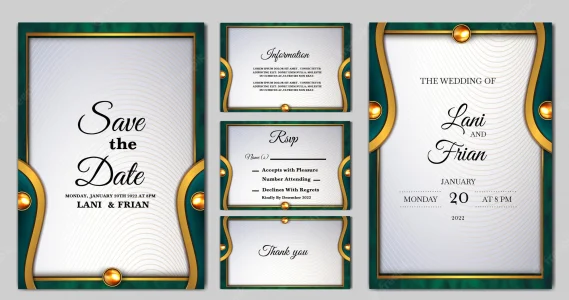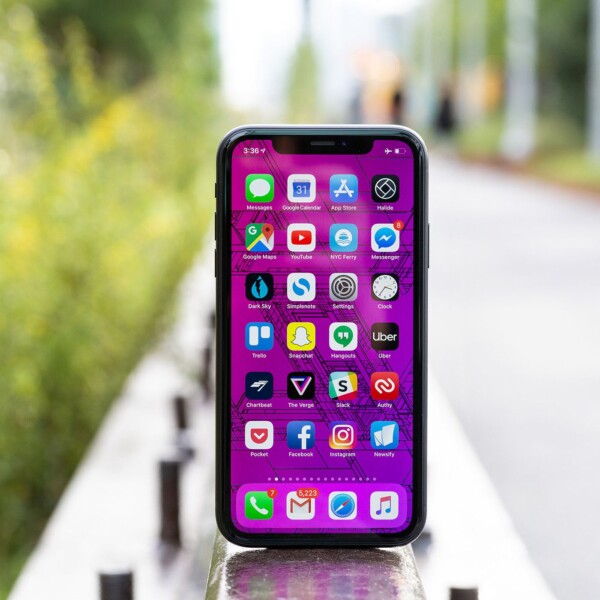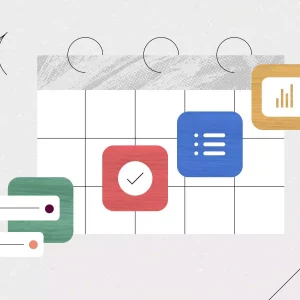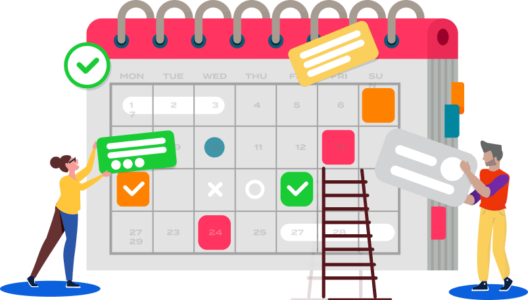Organizing an event requires a certain method and can be quite complex. We explain here the main difficulties you may encounter as well as tips and tricks that can help you!
1- You don’t necessarily think about it…

The things we think about the least can actually be the most important. Don’t discover them on the big day.
Let’s start with the most important and probably the most problematic: the participants. Why? Because they are an external element. Because they are an external element that you do not control completely. But they remain essential to your success: without them the event would be a total failure. Several questions arise:
-How to make them come?
-How to satisfy them?
-How to make them participate in the sense of what you have imagined? (For example: that they discuss among themselves during an after-work and that there is no selfishness).
We will detail here essentially the means of communication to be used to make the participants come.
2- Let’s start with the most obvious: getting them to come.
To do this, there are 3 solutions available to you initially:
1-Sending invitations if you only want to invite people you already know (and whose contact information you have).
2-The use of online platforms.
3-The use of old-fashioned advertising (local newspapers, signs, local non-commercial radios, distribution of flyers in mailboxes in the area where the event takes place, etc.) to communicate with a large, rather local and not necessarily digitalized audience.
3- Let’s look at sending invitations:

They may seem old-fashioned but good old invitations are actually essential (even today).
Why? Because they allow you to address the person concerned directly.
We may be going against the grain, but we recommend that you send out paper invitations. With computers, you can be sure that your guests will receive less and less real paper letters (except for ads). These letters will be less drowned in a flood of messages.
Being tangible, they leave a more important trace that people will be able to consult and re-consult as they wish. With a real paper invitation, guests will feel more concerned and will potentially be more numerous at your event. However, the paper invitation does not prevent you from diversifying your communication by sending an email as well.
4- Let’s now take a closer look at the online platforms.


The most classic one is the Facebook event which allows you to communicate via a news feed to the people who have registered for the event. Practical, the platform has the advantage of having a large number of users and remains popular with a wide audience.
You can combine it with another service of the American social networking company: the Whats App group. Creating a Whats App group (giving your contact information on the Facebook group so that people can access the Whats App group) can allow you to supplement the information available on the Facebook feed.
It’s not mandatory, but let’s just say it’s a complementary solution (even more mobile oriented). If however you don’t want to leave the blue platform you can always create a group (private or public depending on your choice) on Facebook directly.

Another larger platform, Event Brite allows you to organize events with a large audience. Beware that you may lose control of the number of participants. You will also have less information about their identity.

The Craiglist site can help you spread your event locally (in the “Community>Events” section). Craiglist is a site that lists (among other announcements) events in a specific geographic area. Users can go there to find out what the event is and how it’s going.

Coala: a simple mobile alternative to make your job easier!
We couldn’t conclude this section without talking about our in-house solution: Coala.
Coala is a PWA (Power Web App) meaning a website designed as a mobile application and made to be used as such. Coala has many advantages:
1-Its ease of use. If you are familiar with using a smartphone you should be able to use Coala without problems.


2-Compatibility. Coala is a fairly inclusive company. Therefore the app (or rather the website if you have been following) is adapted to iOS but also to Android, to smartphones and tablets and globally to all screen sizes. This aspect should allow you to leave nobody on the side of the road from a technical point of view. So if you are asked this type of question: “Does it work on Android? “And with iOS? You can answer “YES! It works with everything!
3-The information available. The app asks you just what you need so that it’s neither too light nor too complex. You will simply need to fill in information such as:
The name of the event, the price (if applicable), an image, a description, possible elements with which participants can come without forgetting of course the date and the location.


4-Save time. In a minute and a half your event is created and available for all users.
5-The management of participants. This is probably the biggest advantage of this application. It allows you to clearly see how many people are participating, and to remove some if you wish. It also simplifies communication between them, since once they have registered they will have access to a chat room to discuss.
6-Diversity. Coala allows you to create different types of events:
-Cultural events: concerts, board games, movie premieres, etc (red pins on the map).
-Sporting events: matches, tournaments, simple games with friends, etc. (green pins).
-Professional events: after-work, conferences, company seminars, etc (blue pins).
-Sales of services: car wash, hairdresser, jet-ski rental, etc (orange pins).
-And even commercial events to sell items: car sales, auctions, flea markets, etc (yellow pins).
-Any other event you can imagine (purple pins).
So the offer is quite complete and the potential is huge.
7-A last one for the road: it’s totally FREE!
In fact Coala was designed to bring people together. Social networks give rise to relationships in the virtual sphere and keep us apart from each other. With Coala you can meet people in real life around events.
Follow this link to access to the app: Coala
To avoid losing the link to Coala, a tip: add the app to the home screen. This will save you time in accessing the app and avoid re-entering the web address each time and you might forget.
5- Old school advertising.


If you want to create a local event, older advertising channels can be complementary to digital. You can ask a town to publish a small article in their newspaper about what you want to do.
Some radio stations can also put a message on the air. However, beware that commercial radio stations will never do it for free (ask about their nature beforehand or you may be disappointed). To contact them, a visit to their website in the “Contact” section will generally give you the necessary information to reach them.


Another old-fashioned technique is to distribute leaflets in mailboxes. We advise you (to maximize the success of the operation) to be forceful in your arguments and to emphasize the advantages that the people who participate in your event will obtain. Your source of inspiration should not be the page of a book but a political leaflet. Don’t overdo it either.

Finally, the good old-fashioned signs will allow you to reach people who are waiting with their cars at the traffic lights. Be careful though, an authorization from the municipality is often necessary (and their agreement required, it goes without saying). For a successful communication bet on a short, striking and readable message (people who drive by do not have time to read a text).
Ideally, add an illustration to maximize memorization. Don’t forget to include the dates of the event. Don’t forget to remove the signs once the event is over (think of the planet).
6- Confirmation

As mentioned above, participants and their behavior can be unpredictable. It is therefore particularly important to ask for confirmation of their presence before the event. There are two reasons for this:
-To remind them that it is happening (they may have forgotten)
-To avoid disappointments such as ordering food and drink for 100 people when only 10 are attending.
So a tip: make a list of participants (if you know them and if they are not too numerous) and check off each name to know who is coming and who is not.
7- Diversification

For the communication channel to use, a piece of advice: Diversify! Especially if you are targeting a large audience in terms of age or interests. Diversification will allow you (maybe) to avoid a lack of success. Try all the means of communication mentioned above (if they are adapted).
But be careful with digital: you have to communicate all the most important information (the same information) on all channels in an almost synchronized way.
This way, the participants will be well informed and will not waste their time looking at all the places where you are present. You will avoid an overload of information sources and a risk of fatigue.
8- Cross channel

When you use a communication channel (preferably digital), don’t hesitate to put links to your other means of communication. Example: share the address of the Facebook group on Event Brite or Craiglist (and the Whats App group on the Facebook group).
This will grow the community and potentially spill traffic from the most successful channels to the least successful ones. This way the different communication channels will feed each other.
9- How to satisfy the guests?

This is a thorny question that you absolutely must answer. How to satisfy your guests? To answer this question, we will adopt a sensory approach. After all, their satisfaction depends on the information that their senses send, right?
So look for ways to satisfy all their senses: this approach will help you put content in your event. But let’s start at the beginning and give an example. Let’s choose a sense; for example, sight. How can you make them appreciate what they see? By working on the location and decoration of course! Start by finding a beautiful location.
If your event is quite festive and extends into the evening you can put in lights. If there is a meal, decorate your table with good taste. Add balloons and anything else you can think of to give it a festive feel (if that’s what your event is about).
We’ve talked about a meal? That brings us to another sense: taste. Give your guests good food (whether it’s an appetizer or a meal).
Think also about their ears by putting a festive background music with an adapted sound volume.
If you have the possibility, regulate the temperature of the air conditioning so that it is neither too cold nor too hot.
You are free to imagine as much as you can so that everyone is at their best.
10- The plan of the event:

Think also about a plan for the different activities. You have satisfied the senses of your guests? Don’t forget to keep them entertained so that they don’t get bored with well-paced activities. List your activities with the time allotted to each and the corresponding time. This will allow you to manage time well.
11- The preparation schedule

We have mentioned the time? It is now important to focus on the preparation schedule of the event. To do so, you must list all the tasks you have to accomplish to reach the final result.
A tip: start from the date of the event and work backwards to today’s date by progressively adding the different tasks to be accomplished with an assigned duration for each. Allow a margin of error of several weeks by reserving time at the end for unforeseen events. This document is called a retro-schedule.
12- Cost management.

Are you planning to use external service providers (to rent a room, for the music or for a meal)? You must imperatively control the costs. To avoid disappointment we advise you to multiply the estimates by comparing prices and services.
To do this, list each element for which you need to work with a service provider. In a table, note the different criteria on the title of the rows and the name of each service provider on the title of the columns.
Fill in the inside of the table with the proposals of each provider for the different criteria. Never forget to put a line for the price. This way, you will be able to compare more easily and objectively each company to make the right decision.
13- Your event is over? Don’t forget to…

Thank the participants of course! Individually if you can or with a global message through the digital platforms we mentioned above. You can add all the contents (photos and videos) of the most memorable moments.
You will be able to reuse them if you create a new event of the same type to attract new participants or bring back good memories to the old ones and make them come back! So don’t forget to take pictures and videos during the event.
We hope that this article, which is of course not exhaustive, has helped you in the organization of your event.

